Maximizing the Accuracy of IME and GME
Precise reporting of Indirect Medical Education (IME) and Graduate Medical Education (GME) is essential for teaching hospitals aiming to secure appropriate Medicare reimbursements. These funds support the training of future healthcare professionals and offset the additional costs associated with teaching programs.
This comprehensive guide delves into the intricacies of IME and GME, clarifies key terminologies, addresses common reimbursement challenges, and offers actionable strategies to enhance reporting accuracy.
You can also gain expert insights into optimizing IME and GME reimbursements by tuning in to BESLER’s webinar and podcast series. Christina Brown, BESLER’s Director of Reimbursement Services, breaks down complex reporting requirements and shares best practices for ensuring compliance and maximizing reimbursements. Watch the webinar or listen to our podcast today.
Understanding IME and GME
To navigate Medicare reimbursement, it’s essential to understand the key terms and distinctions between Indirect Medical Education (IME) and Graduate Medical Education (GME). These programs provide crucial funding for training medical residents, but each serves a different purpose and follows specific calculation methods.
Graduate Medical Education (GME)
Graduate Medical Education, or GME, encompasses the formal medical training that follows medical school graduation, including residency and fellowship programs. Medicare compensates hospitals for a portion of these training costs through Direct Graduate Medical Education (DGME) payments.
DGME payments are calculated based on a hospital-specific Per Resident Amount (PRA), the number of Full-Time Equivalent (FTE) residents, and the hospital’s Medicare patient load.
Indirect Medical Education (IME)
Indirect Medical Education (IME) payments address the higher patient care costs associated with teaching hospitals. The IME adjustment is determined by the ratio of FTE residents to the number of available beds, acknowledging the indirect costs of medical education on hospital operations.
Nursing and Allied Health Education (NAHE)
In addition to physician training, Medicare also provides support for Nursing and Allied Health Education (NAHE) programs. This funding helps hospitals cover the costs of training nurses, therapists, and other healthcare professionals in approved educational programs.
It’s important that hospitals properly track and report their NAHE programs to optimize available reimbursement opportunities.
Key Terminology
In order to fully understand how to maximize IME and GME payments, one must know key terms:
- Per Resident Amount (PRA): A fixed amount representing the allowable cost per FTE resident, used in calculating DGME payments.
- Full-Time Equivalent (FTE): A unit measuring the workload of an employed person, making workloads comparable across various contexts. In GME, it represents the proportion of time a resident spends in training.
- Medicare Administrative Contractor (MAC): Acts as an intermediary between the federal Medicare program and healthcare providers by geographic jurisdiction to handle specific administrative and audit functions for Medicare.
Medicare Cost Report Entries for IME and GME
Accurate completion of the Medicare Cost Report is vital for proper IME and GME reimbursement – specific worksheets are directly related to the reimbursement your hospital receives. Teaching hospitals must meticulously document resident counts, Medicare utilization, and financial data across multiple worksheets to ensure they receive the full extent of entitled reimbursements. Below are the key sections that impact IME, GME, and NAHE reimbursement calculations:
Worksheet S-2, Lines 56-68
The Worksheet S-2, Lines 56-68, collects essential facility information, including whether a hospital qualifies as a teaching hospital and is eligible for IME and DGME payments. It also highlights whether the hospital operates an approved Nursing and Allied Health Education (NAHE) program, impacting funding eligibility for non-physician training programs.
Worksheet E-3, Parts II & III, Lines 1-11
The Worksheet E-3, Parts II & III, Lines 1-11 calculate the teaching adjustment portion of the settlement for Rehabilitation and Psychiatric sub-providers, taking into account the Medicare utilization rate and other reimbursement-affecting factors. It’s critical for hospitals to accurately report amounts on these worksheets as errors in these values can lead to significant reimbursement shortfalls.
Worksheet E-4
Worksheet E-4 documents DGME payments by reporting the number of FTE residents, the Per Resident Amount (PRA), and Medicare utilization statistics. Hospitals should ensure accuracy in FTE reporting to avoid discrepancies in DGME reimbursement calculations.
Worksheet E, Part A, Lines 5 – 29.01
This worksheet calculates IME adjustments, including but not limited to:
- Diagnosis-Related Group (DRG) payments
- The intern- and resident-to-bed ratio
- The IME formula, which accounts for increased patient care costs in teaching hospitals
Hospitals must report these figures correctly to maximize IME payments and maintain compliance with Medicare reimbursement guidelines.
Common Reimbursement Challenges
Hospitals may encounter several issues affecting IME and GME reimbursements for interns and residents. Common challenges include:
- Available Beds: The number of available beds directly influences the IME adjustment calculation. Beds that can be staffed within 24 to 48 hours are considered “available.” Accurately reporting available bed counts is essential, as overreporting can lead to reduced IME payments, while underreporting may trigger compliance issues.
- IME Billing: Proper IME billing requires meticulous documentation and timely claim submissions. Errors or delays in billing can result in missed reimbursement opportunities and potential financial losses for teaching hospitals.
- FTE Cap: Medicare imposes limits on the number of Full-Time Equivalent (FTE) residents eligible for reimbursement, based on historical training levels. Exceeding these caps can lead to uncompensated training costs, making it crucial for hospitals to monitor and manage their resident counts effectively. Understanding cap logic is particularly vital when creating new programs due to the limited number of years to build the FTE cap.
Addressing these challenges through accurate reporting, efficient billing practices, and proactive management of resident numbers is vital for optimizing IME and GME reimbursements.
Strategies for Ensuring Accuracy
To optimize IME and GME reimbursements, hospitals should consider the following practices:
- Counting Intern and Resident FTEs: Implement robust tracking systems to monitor resident activities and ensure accurate FTE counts. Regular audits can help identify discrepancies and maintain compliance.
- Collecting Minimal Demographics: Gather essential demographic information for all residents, including:
-
- Residents’ full names.
- Individual Social Security Numbers.
- The initial resident program converted to the CMS resident program code.
- The current resident program converted to the CMS resident program code.
- Name of Medical School graduation and date.
- ECFMG certification date.
This data supports accurate reporting and reimbursement calculations.
-
- Maintaining Rotation Schedules: Keep detailed and up-to-date rotation schedules for all residents. Accurate schedules ensure proper allocation of time and resources, directly impacting reimbursement. Important rotation considerations include:
-
- Is the rotation at the hospital?
- While on the rotation, do the residents have other clinic duties they must maintain?
- Does the resident provide patient care on the rotation?
- Is the rotation in an “Exempt” unit?
- If the rotation is outside the hospital:
- Does the hospital pay for the resident?
- Is there a written agreement with the entity the resident is rotating to?
-
- Available Beds Checklist: Regularly verify and document the number of available beds, ensuring compliance with Medicare’s definitions. Accurate bed counts are essential for correct IME adjustments. An example checklist may look like this:
-
- Enter hospice days on Worksheet S-3 Part I.
- Neonatal ICU beds count. Only include true NICU beds.
- Report observation days in Worksheet S-3 Part I.
- Perform an annual inventory looking for unused beds.
- Determine if you can reduce beds by removing oxygen hookups.
- Make sure that designated observation-only beds aren’t included in the Medicare bed days available cap.
-
- Medicare Advantage Best Practices: Develop and implement best practices for managing Medicare Advantage claims:
-
- Follow a process of identifying MA payers to assist in the billing process. Simulated payments for the Medicare Cost Report appear on Report 118 of the Medicare “Payment Summary and Reimbursement Report” or PSR.
- Talk with your Patient Financial Services department and ensure that shadow billing is automated as much as possible.
- There are a lot of MA plans out there – consider using an outside firm that specializes in IME billing to do “clean up.”
- Work your denials on shadow claims bills.
- You may not be sure beyond any doubt that a patient is in an MA plan. Medicare will deny claims for patients who are not in an MA plan if you bill. Talk with your compliance team on these issues.
-
By implementing these strategies, teaching hospitals can enhance the accuracy of their IME and GME reporting, thereby securing appropriate funding to support their educational missions.
Maximize Your IME and GME Reimbursements with BESLER
Navigating the complexities of IME and GME reimbursements requires expertise, precision, and a proactive approach. With decades of experience in healthcare reimbursement, BESLER is a trusted partner for hospitals and teaching institutions nationwide. We specialize in Cost Report preparation, compliance reviews, FTE audits, and Medicare reimbursement optimization.
Ensuring accuracy in resident counts, available bed reporting, and IME billing are critical to securing the full extent of your entitled Medicare funding. BESLER offers comprehensive solutions to help your organization meet these challenges head-on. From expert-led webinars and checklists to hands-on consulting, we provide the tools and insights needed to enhance your reporting accuracy and compliance.
Are you ready to optimize your IME and GME reimbursements? Stay informed with our expert insights and industry updates by signing up for our newsletter. Or schedule a meeting with one of our specialists to discuss how BESLER can help you streamline reporting, mitigate compliance risks, and optimize reimbursements.




